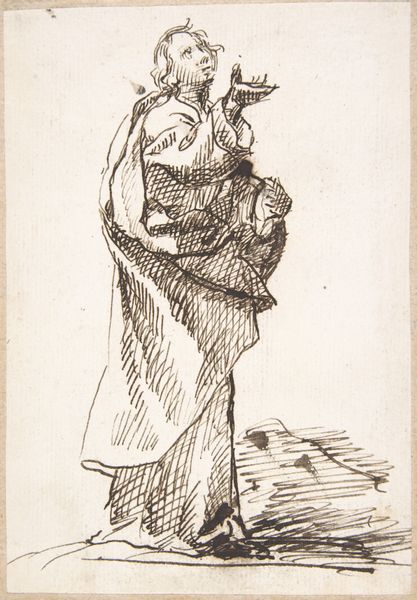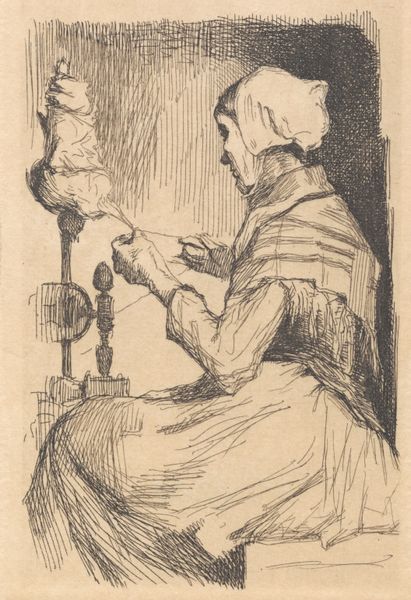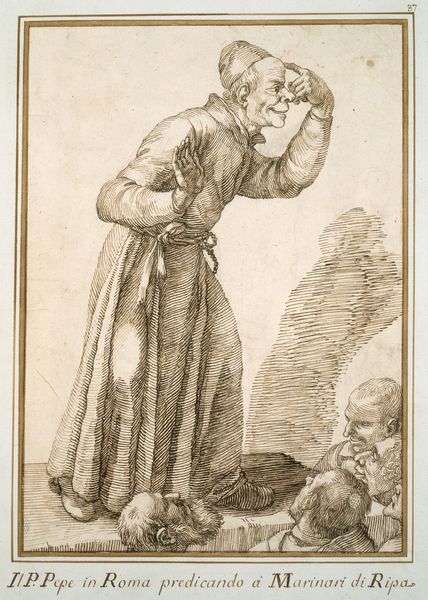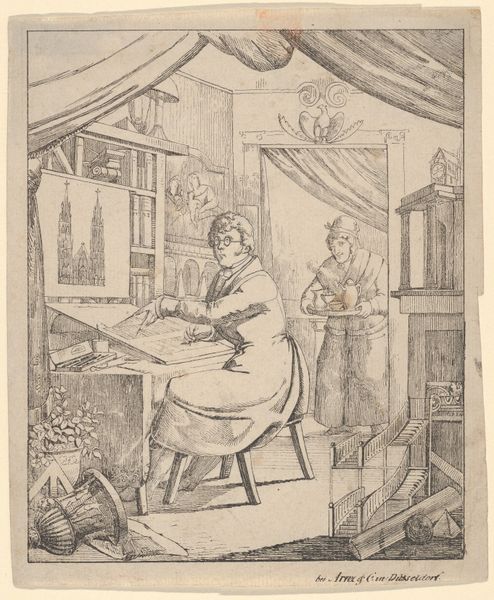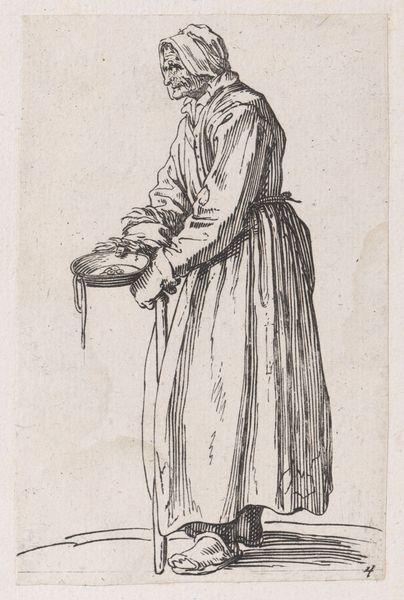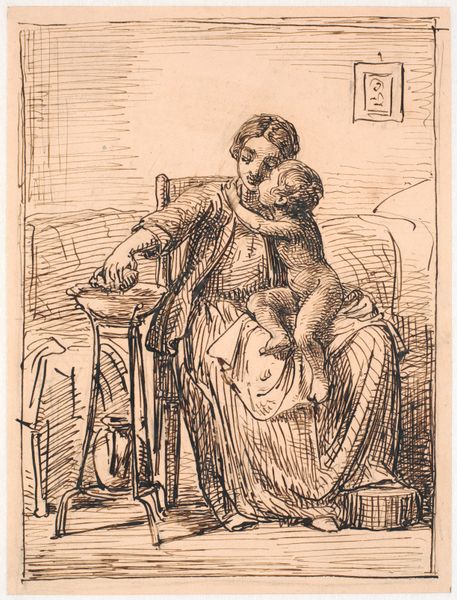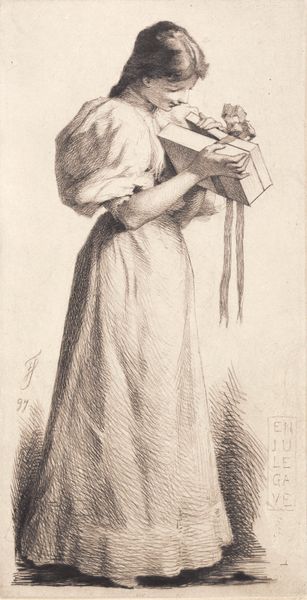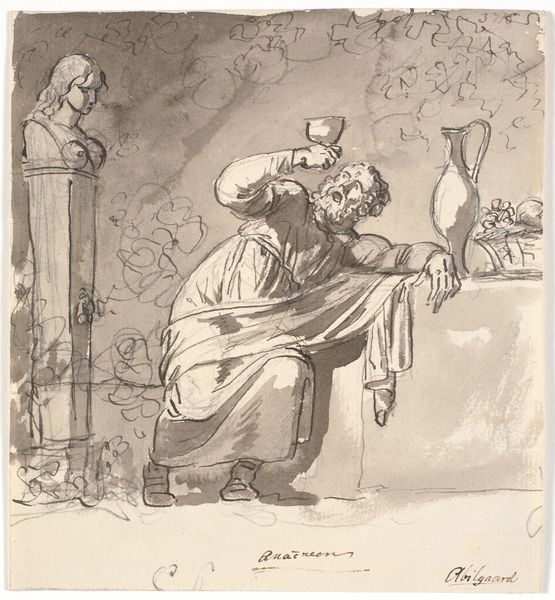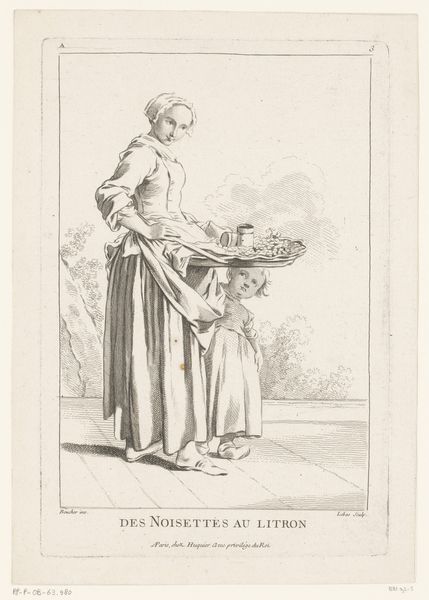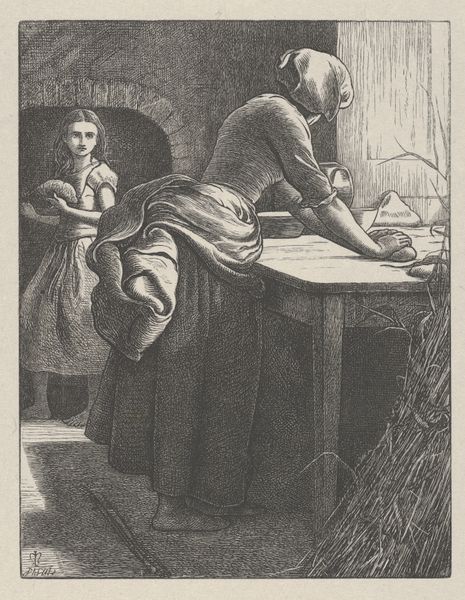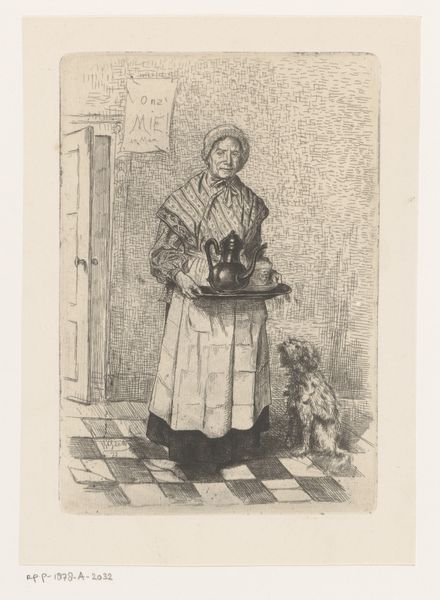
Reverse copy of Noisettes (Nutcrackers), from Les Cris de Paris (The Cries of Paris) 1720 - 1799
0:00
0:00
drawing, print, etching
#
portrait
#
drawing
#
baroque
#
pen drawing
# print
#
etching
#
figuration
#
line
#
genre-painting
Dimensions: Sheet: 8 7/8 x 6 7/16 in. (22.5 x 16.4 cm)
Copyright: Public Domain
Curator: I’m drawn to the stark, linear quality of this etching. It’s called "Reverse copy of Noisettes (Nutcrackers), from Les Cris de Paris (The Cries of Paris)" by Jacques Philippe Le Bas, dating from the late 18th century. Editor: Yes, that starkness almost gives it a sense of immediacy. The prominent lines and contrasting use of hatching certainly grab the eye, conveying texture but flattening the scene. The piece seems quite candid in nature, and yet something about the subjects feels... staged? Curator: "Les Cris de Paris," or "The Cries of Paris," was a popular theme, a reflection of urban life captured in prints that would have circulated widely. Le Bas wasn't just interested in capturing appearances; he was interested in capturing social roles and economic activity. You have this young woman selling nuts, likely on a street corner, perhaps trying to make ends meet with the help of a child. It is both a means for survival and another opportunity for visual consumption of lower-class citizens. Editor: Visually, it's all about that division of labor embodied by line. The almost uniform hatching of the woman's clothes contrasts with the sparser depiction of the child peering out from behind. The angle of the child creates this dynamism. Did Le Bas employ specific linear techniques to establish spatial depth, given the etching's flat presentation? Curator: Well, this being a reverse copy after another artist makes discerning original artistic intention difficult. These "Cries" prints often took a moralizing stance, sometimes subtly commenting on the conditions of those depicted, even while supposedly just recording urban types for an elite audience. They are records and judgment. Editor: So the linearity isn’t just descriptive; it’s practically an articulation of that socioeconomic stratification. Looking at the details, you can almost discern varying emotional textures from the faces depicted by how different the hatching and linework becomes in those areas. The artist even changes line direction and proximity. The lines around the seller and her offerings are finer, indicating greater value placed there, drawing the viewer’s focus while perhaps offering deeper symbolism. Curator: The distribution of prints like these surely helped to create and solidify perceptions of social class. Editor: It’s quite revealing how seemingly simple choices regarding line and form carry such profound weight. I'm still turning over the way its raw quality makes you see everything afresh, like a sketched reality laid bare for inspection.
Comments
No comments
Be the first to comment and join the conversation on the ultimate creative platform.
